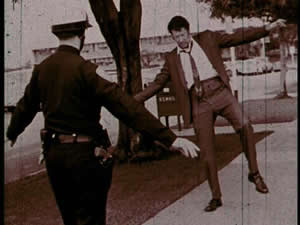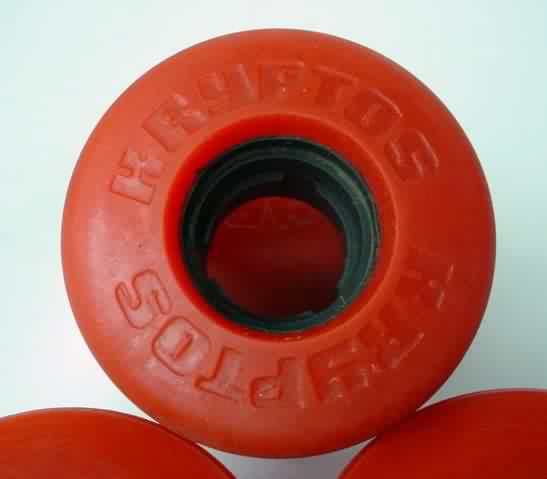Moral Superiority
/There is a more pernicious vibe that has been eating me: People who claim that a teacher who doesn't charge a fee to students is somehow superior to those who do charge.
 In Europe this idea is historically inseparable from hatred of Jews. A Jew, by definition, lacked virtue. The European definition of a noble gentleman was of course predicated first on being born to a father and mother of noble birth. But that title could be revoked if you failed to protect the honor of your women or your name. Opening a store or pedaling goods was a quick way to lose your nobility.
In Europe this idea is historically inseparable from hatred of Jews. A Jew, by definition, lacked virtue. The European definition of a noble gentleman was of course predicated first on being born to a father and mother of noble birth. But that title could be revoked if you failed to protect the honor of your women or your name. Opening a store or pedaling goods was a quick way to lose your nobility.The word luxury has come to mean something nice that isn't cheap, but it used to be a sin. To commit the sin of luxury was to have objects or products and services that were reserved for people of a higher class.
Offering a service for free meant you were avoiding the taint of money. Aristocrats controlled everything, land, church, food. Aristocrats did not concern themselves with money, that was the way of peasants and merchants who coveted the luxuries of a life they were excluded from at birth.
In the Middle-east, prices are still set by complex family tribal relationships, anyone outside of that system lacks virtue, and automatically gets a higher price. To offer services for free in this context would simply mean that you are accumulating social obligations in a society where those obligations trump money.
China was somewhere in between. A system of merit existed by which individuals could take an exam and gain a rank in the government or the army. People were also promoted within this system on the basis of their competence. Of course there was nepotism and corruption, but the basic idea was to promote a person because he was the best person for the job.
This existed simultaneously with big family networks. Chinese power can be viewed as multiple overlapping and concentric rings of family influence, each of which makes alliances with other circles of power, the government simply being the biggest most powerful family.
I'm not exactly sure why a certain strain of traditional Chinese thought has felt merchants, and itinerant performers were people of lower virtue. Perhaps it is an extension of the Confucian precept against calculating your advantage over others? More likely it is just a fear of people who are more worldly, people who have a drive to seek their fortune outside of the often stifling confines of village life.
Now add to this that the Communists made a totalitarian state religion out of hating independent business people. After all, business people travel and have a way of undermining the status quo by creating alternate sources of authority.
Doctors in Communist China in the 1980's had to see everyone for free. Gordon Xu (George Xu's brother) worked in a Hospital. He would arrive at 8 am and wasn't allowed to leave until everyone waiting in line had been seen. Most days that was after 8 pm, about 80 patients a day. The state paid him a small salary for his service.
There is no virtue in not charging a fee. If you want to reward low income students who demonstrate merit by giving them free lessons, that's great. But that's because you want to have great students, not because you are doing some great deed for society. Not charging money is often a way of creating social obligation, which has its own value. If you are already rich and don't charge, so what, it means nothing. If you are low income yourself and you don't charge, so what, it just means you don't need the money.
If honor and virtue are diminished by charging money, then they are things not worth having.

 Dave over at
Dave over at  The word orthodox is pretty common. It means a right way of thinking or a correct standard way of understanding.
The word orthodox is pretty common. It means a right way of thinking or a correct standard way of understanding.
 To feel your body or not to feel your body, that is the question.
To feel your body or not to feel your body, that is the question. Traditionally strange feelings and disembodied feelings were covered under the subject: trance and possession. Now we have the scientific categories of proprioception and kinesthetic awareness.
Traditionally strange feelings and disembodied feelings were covered under the subject: trance and possession. Now we have the scientific categories of proprioception and kinesthetic awareness. A teacher's greatest dilemma is whether to teach gates or stone bridges.
A teacher's greatest dilemma is whether to teach gates or stone bridges. can at least communicate with them, but snow is softer than concrete and there aren't a lot of cars on the slopes.
can at least communicate with them, but snow is softer than concrete and there aren't a lot of cars on the slopes.
 realistic for me to ask all my taijiquan students to take up downhill skateboarding.
realistic for me to ask all my taijiquan students to take up downhill skateboarding.
 There is a Daoist precept against subordination. In fact there is a precept (one of the 180 of Lord Lao) that says, "Do not serve in the military. If you must serve in the military do not serve in a subordinate position." I take this to mean join as an officer and be in a position to make decisions about life and death.
There is a Daoist precept against subordination. In fact there is a precept (one of the 180 of Lord Lao) that says, "Do not serve in the military. If you must serve in the military do not serve in a subordinate position." I take this to mean join as an officer and be in a position to make decisions about life and death.
 When a shaman purifies a space, she uses her acquired strength to forcibly evict all the ghosts and spirits that have taken up residence there. Since Daoists did not practice subordination to other entities and they were weak by precept and commitment, they didn’t actually purify the space immediately. Instead they bowed. The act of bowing is a declaration that human beings are going to temporarily use the space for meritorious actions. Bowing doesn’t scare away ghosts, or banish them. Bowing is a way of asking spirits to temporarily clear out. It is a declaration that the practice about to be performed will not be of any interest to ghosts. A ghost is an entity defined by weak, deficient, or lingering commitments.
When a shaman purifies a space, she uses her acquired strength to forcibly evict all the ghosts and spirits that have taken up residence there. Since Daoists did not practice subordination to other entities and they were weak by precept and commitment, they didn’t actually purify the space immediately. Instead they bowed. The act of bowing is a declaration that human beings are going to temporarily use the space for meritorious actions. Bowing doesn’t scare away ghosts, or banish them. Bowing is a way of asking spirits to temporarily clear out. It is a declaration that the practice about to be performed will not be of any interest to ghosts. A ghost is an entity defined by weak, deficient, or lingering commitments.
 I want to announce that we have officially entered the Era of Conditioning.
I want to announce that we have officially entered the Era of Conditioning. I'm anti-conditioning. I believe in doing things form the inside out. If I said, "I believe in beginning from the heart," you could accuse me of being a silly romantic. But it's not because I want to bring out genius, or preserve mystery, I just prefer spontaneous unconditioned responses.
I'm anti-conditioning. I believe in doing things form the inside out. If I said, "I believe in beginning from the heart," you could accuse me of being a silly romantic. But it's not because I want to bring out genius, or preserve mystery, I just prefer spontaneous unconditioned responses.

 their students or clients that I don't get. If you tap into a client's insecurities, or their desire for power, by convincing them that they will be freer, or happier, or stronger, or more preceptive, or even more intuitive, if only they quit eating fried chicken and do some groovy breathing exercise--who am I to get in the way? Those commitments are legitimately good for one's health. Other people are free to subordinate themselves to people and ideas.
their students or clients that I don't get. If you tap into a client's insecurities, or their desire for power, by convincing them that they will be freer, or happier, or stronger, or more preceptive, or even more intuitive, if only they quit eating fried chicken and do some groovy breathing exercise--who am I to get in the way? Those commitments are legitimately good for one's health. Other people are free to subordinate themselves to people and ideas.